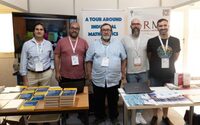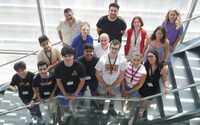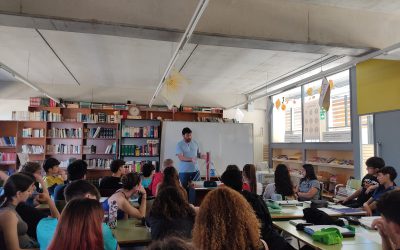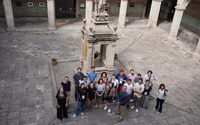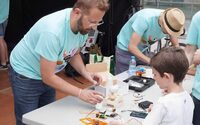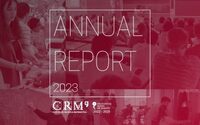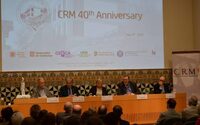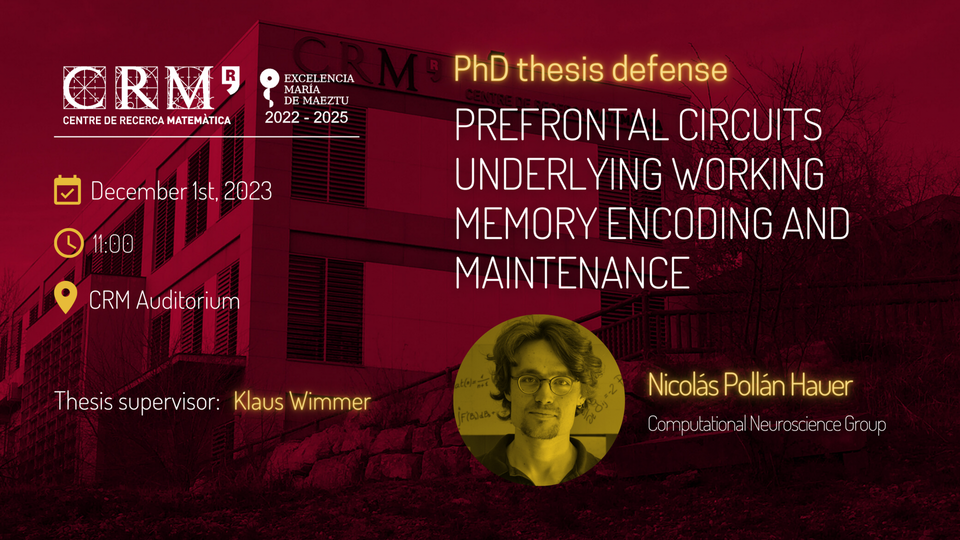
Prefrontal circuits underlying working memory encoding and maintenance
PhD candidate: Nicolás Pollán Hauer
Academic tutor: Lluís Alsedà i Soler
Thesis supervisor: Klaus Wimmer
abstract
Working memory, the capacity to maintain and manipulate information in our minds when it is no longer available in the environment, is a central function of cognition. One of the most important neuronal correlates of this cognitive function are the so-called persistent neurons, which respond selectively to sensory stimulation and sustain their increased activity even after removing the stimulus. This phenomenon, most frequently observed in the prefrontal cortex, has been successfully described by neural network models with attractor dynamics. However, only a few of the neurons engaged in working memory tasks have persistent activity. Moreover, analysis of the experimental recordings at the population level reveals that the code undergoes a change between the stimulus presentation and the maintenance epochs, which is not compatible with a working memory code that would only rely on stably active persistent cells. The prevalence of this finding has motivated the proposal of alternative mechanisms, but current computational models that explain dynamics fail to include stable epochs or do not provide a clear mechanistic interpretation.
In this thesis, we use statistical data analysis and neural network modeling to investigate whether specialized neuronal subpopulations underlie the stable and dynamic working memory codes.
First, we investigated the connection between the observed dynamics in the working memory code and the functional structure of the prefrontal circuits. We analyzed prefrontal recordings from behaving macaque monkeys and observed that feature selectivity is non-randomly distributed across the neurons. This non-random or structured feature selectivity distribution is related to functional distinct subpopulations whose contrasting activity explains the dynamic to stable transition in the working memory code.
Second, we developed a computational model that represents three functional subpopulations as attractor networks working on different dynamic regimes. The model illustrates how the population structure, which implies different neurons active at different task epochs, is directly related to the dynamic transition in the code. Furthermore, we show how the three-network architecture can be easily extended to account for additional features, such as ramping activity and variable maintenance periods.
Third, our subpopulation-based networks have the functional advantage of being robust against distracting stimuli. The model captures the experimentally observed vulnerability to distractors presented shortly after stimulus removal. Moreover, it predicts that top-down feedback enhances the overall network’s robustness.
In summary, we show how the presence of functional subpopulations in the prefrontal cortex can be related to the dynamic to stable transition in the working memory code and to an enhanced capacity to filter out distracting stimuli. In conclusion, our work reconciles attractor dynamics with the observed dynamic changes in the code, still suggesting that attractor dynamics are essential for working memory maintenance.

CRM Comm
Pau Varela & Mariona Fucho
CRMComm@crm.cat
Subscribe for more CRM News
CRM at the 9th European Congress of Mathematics
The 9th European Congress of Mathematics (9ECM) took place in Seville from July 15 to 19, 2024, with 1300 participants, featuring plenary lectures, invited talks, minisymposium talks, and thematic session presentations. CRM participated with...
Ten International High School Students Engage in Advanced Mathematics at CRM
The Centre de Recerca Matemàtica (CRM) hosted ten students from diverse countries during the Barcelona International Youth Science Challenge (BIYSC), engaging them in a comprehensive mathematics program that explored various facets of mathematics...
Los Sesgos Inconscientes: Reflexiones de la catedrática Capitolina Díaz
El viernes 14 de junio, la catedrática de sociología de la Universidad de Valencia, Capitolina Díaz, abordó un tema que afecta profundamente a nuestra sociedad: los sesgos inconscientes, y en particular, en el ámbito de la investigación. Empezó...
“Mates i a xalar” a la ràdio: xerrades de matemàtiques divulgatives a les Terres de l’Ebre
“Mates i a xalar” a la ràdio: xerrades de matemàtiques divulgatives a les Terres de l’Ebre El divendres 10 de maig, un grup d’investigadors del Centre de Recerca Matemàtica, en col·laboració amb el Centre d’Estudis de la Ribera d’Ebre (CERE), van...
Hypatia 2024
El passat dilluns 3 de juny va començar l’Hypatia 2024, un curs d’estiu que es va estendre fins dijous 6 de juny. L’Hypatia és una iniciativa per formar joves investigadors i investigadores i obrir nous camps d’estudi per aquells més sèniors,...
El CRM participa un any més a la Festa de la Ciència
El CRM participa un any més a la Festa de la CiènciaEl Centre de Recerca Matemàtica (CRM) va participar en la 17a Festa de la Ciència amb dos tallers: La La Lambda: Les Matemàtiques de la Música, que va explorar la relació entre les matemàtiques i...
The CRM’s 2023 Annual Report Highlights Growth and Collaboration
The CRM's 2023 Annual Report highlights significant growth, numerous publications, and new projects, emphasizing the center's status as an international leader in mathematical research. Key achievements include the attraction of new talent through...
New Scientific Research Sheds Light on Ecological Dynamics and Late Warning Signals in Conservation Efforts
CRM and CNRS researchers introduce a novel concept, Late Warning Signals (LWS), for aiding post-tipping point ecosystem recovery, enhancing resilience in biodiversity management. LWS may offer crucial insights for timely intervention in ecosystem...
The CRM participates in the MSCA-COFUND TOUCH Project
The CRM participates in the MSCA-COFUND TOUCH Project The MSCA-COFUND TOUCH project, spearheaded by the Universitat Autònoma de Barcelona (UAB), has been funded under the prestigious Marie Skłodowska-Curie Actions (MSCA) and the Horizon Europe...
Eva Miranda, Inclosa a la Iniciativa #científicasCASIO
Eva Miranda, destacada matemàtica catalana i catedràtica a la Universitat Politècnica de Catalunya, ha estat inclosa a la iniciativa #científicasCASIO coincidint amb el Dia Internacional de la Dona Matemàtica. Aquest projecte de la Divisió...
El CRM celebra quaranta anys com a referent internacional de les matemàtiques
El CRM celebra quaranta anys com a referent internacional de les matemàtiques El CRM celebra quaranta anys com a referent internacional de les matemàtiques El Centre de Recerca Matemàtica (CRM), fundat l'1 de gener de 1984, celebra el seu 40è...
Exploring Career Pathways for Mathematics Graduates: Insights from the ‘And after the Degree, What?’ Roundtable
The roundtable titled “And after the Degree, What?” held at the Universidad de La Rioja, during the Conference of Deans of Mathematics, explored various career options for mathematics graduates, such as academia and industry. David Romero, head of the Knowledge Transfer Unit (KTU) at CRM, discussed the unique aspects of industrial PhDs, emphasizing their value in producing highly qualified professionals.

